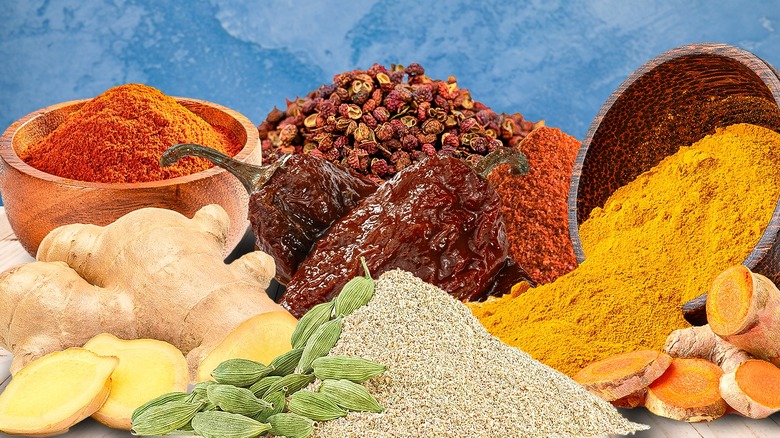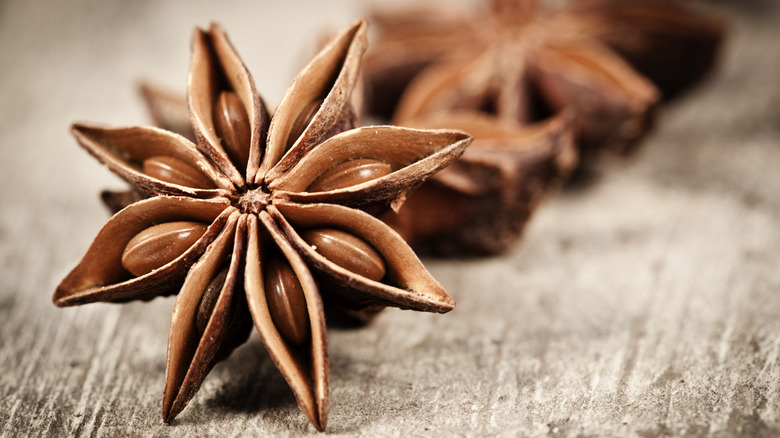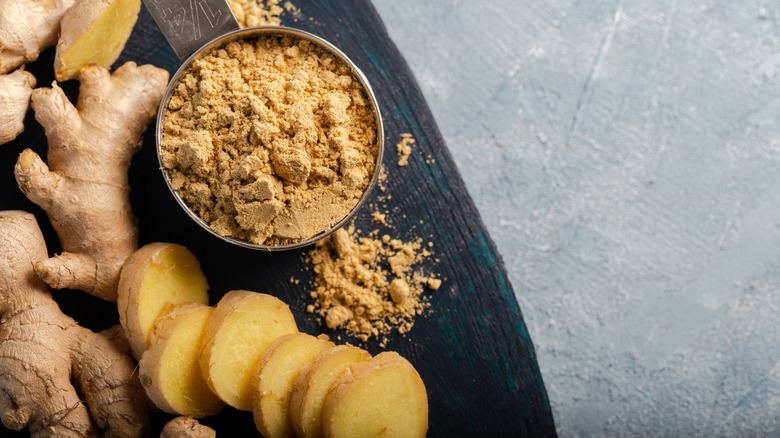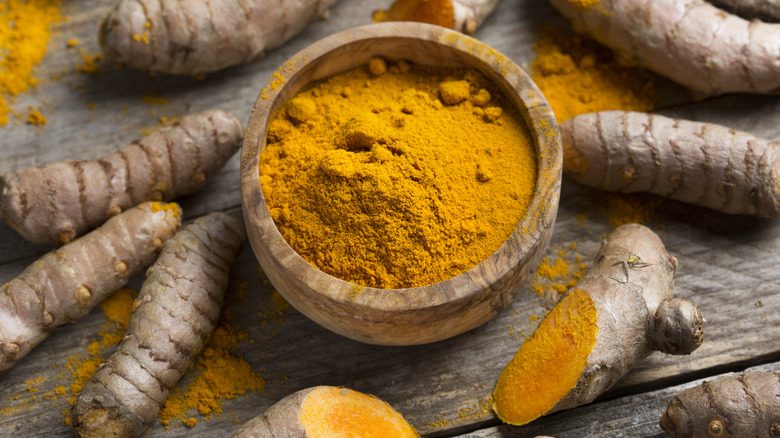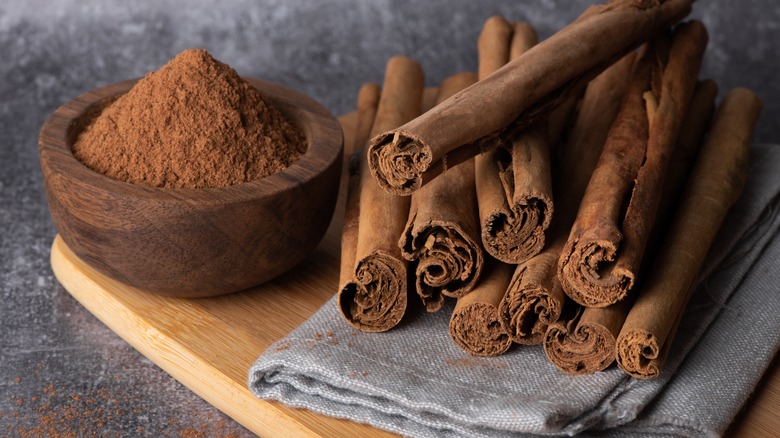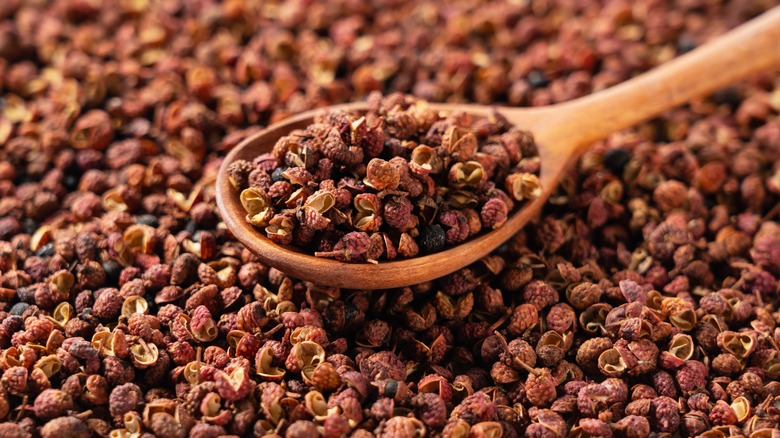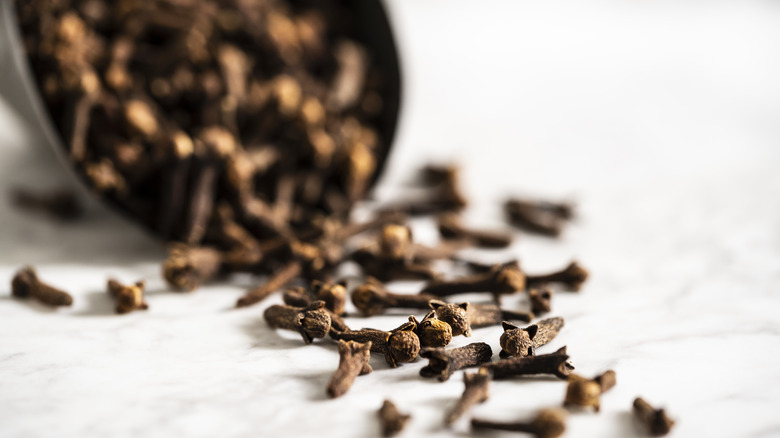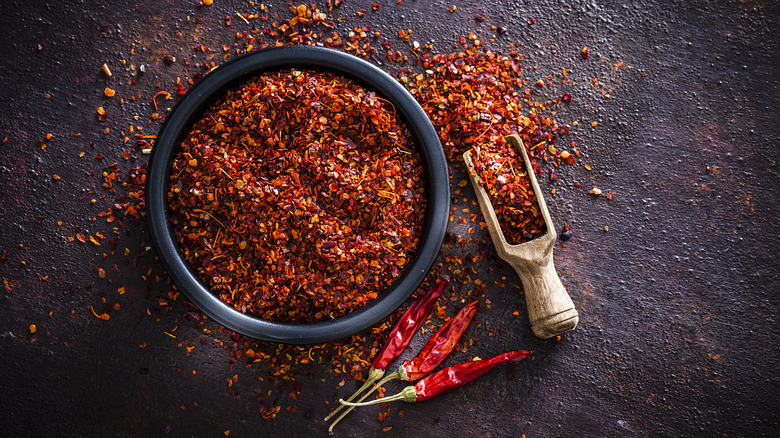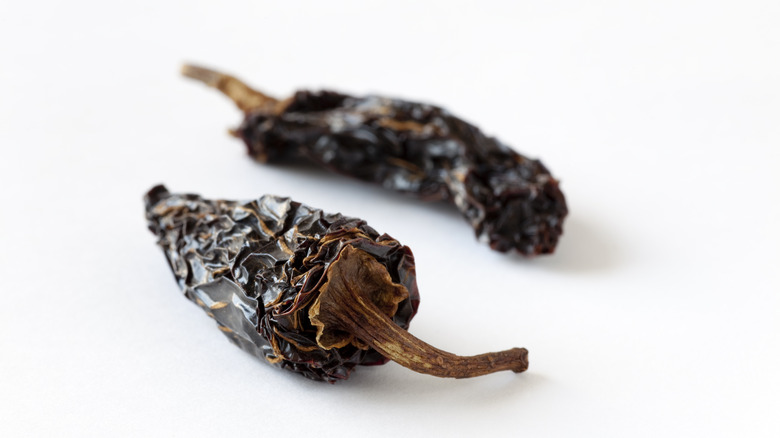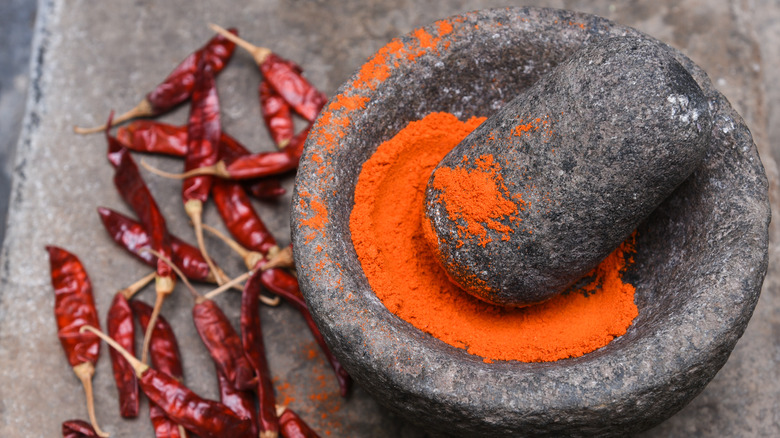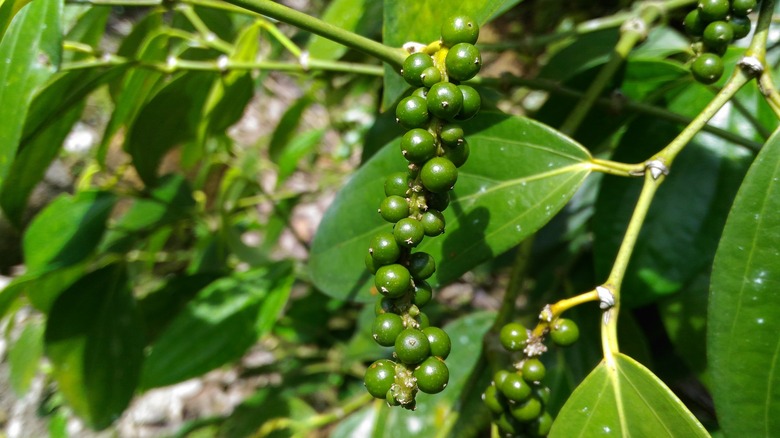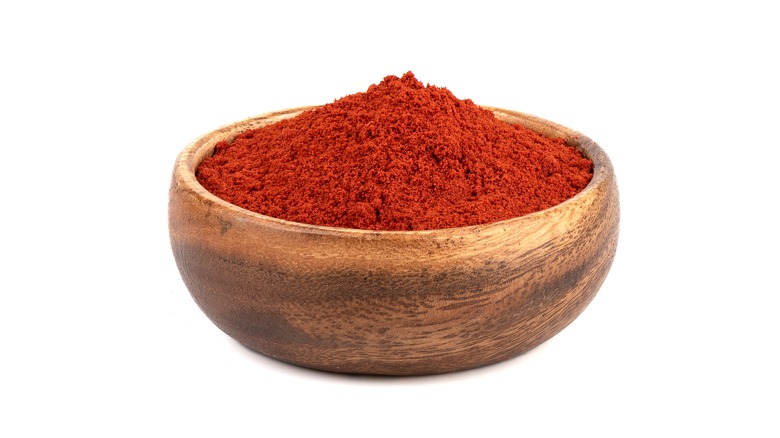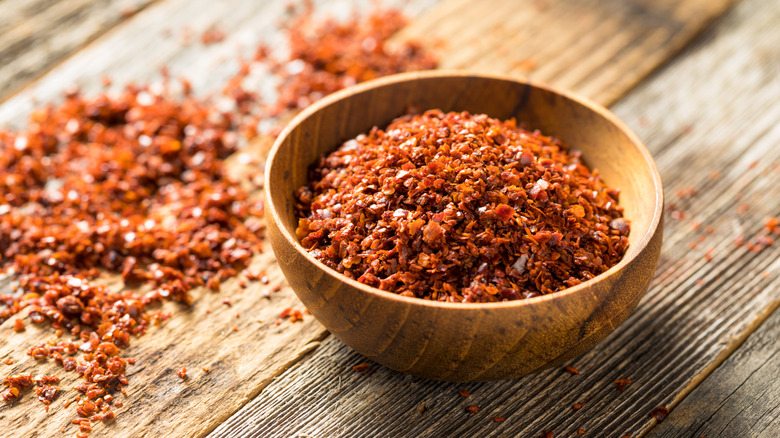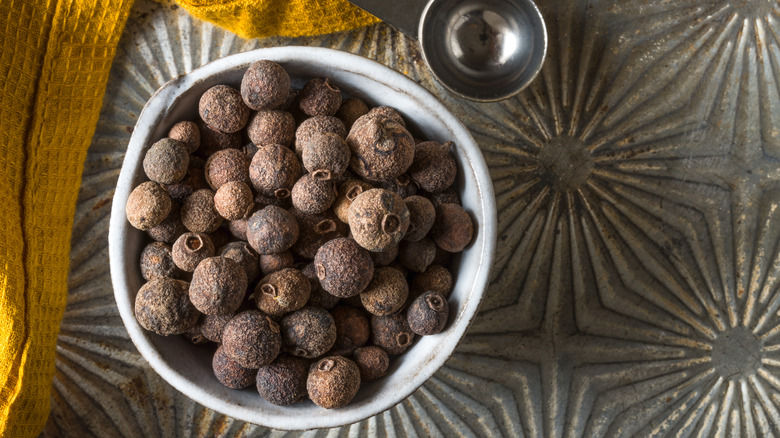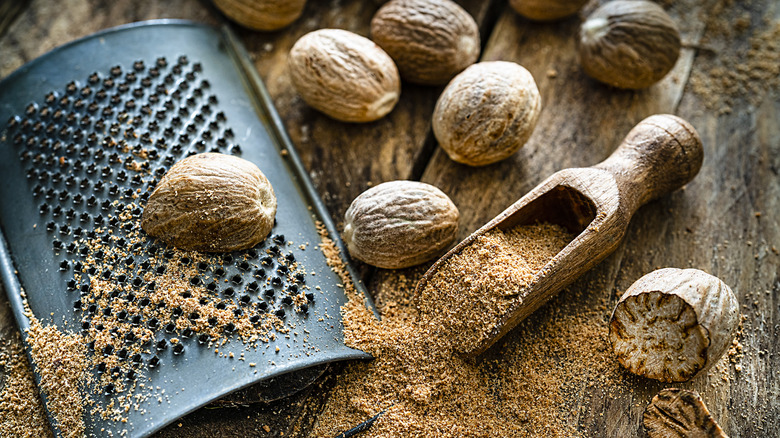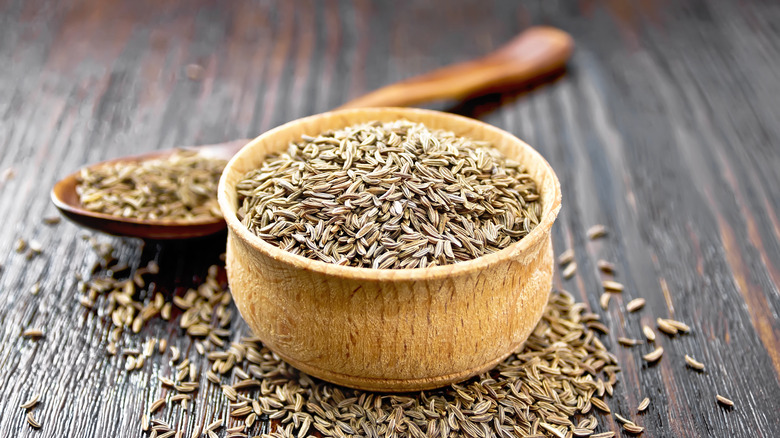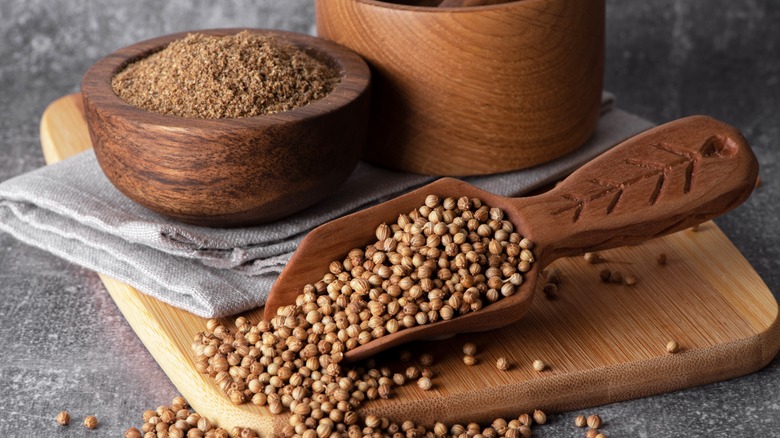A Guide To Warming Spices From Around The Globe And How To Use Them
In many parts of the northern hemisphere, the weather has turned blustery, forcing folks indoors and into their kitchens in search of warmth and comfort. For those looking to move past the pumpkin spice latte and dive further into the wide world of warming spices, this guide will help you to differentiate your Cayenne from your Kashmiri. So dust off the contents of your spice cupboard (or consider replacing some of those spices that have been there a while,) and let's dive in.
Not only are spices a surefire way to add depth of flavor to your dishes and warm yourselves from the inside out, they are also a fantastic source of beneficial minerals and vitamins, flavonoids and antioxidants, and an easy way to add plant variety to our diets. Doctor Tim Spector suggests eating thirty different plant varieties weekly for optimal gut biodiversity and health. The spice cupboard is your best resource for an easy way to reach this goal. Here are just some of the world's warming spices to consider adding to your spice rack to perk up your next dish and your health.
1. Star anise (China and Vietnam)
If you've ever tucked into a bowl of pho or a good hot pot, the intoxicating licorice-flavored broth is a shining example of the power and potency of star anise. Star anise, originally from China and Vietnam, is not only a rich and aromatic warming spice, it's also pretty enough to be strung on a garland. Highly recognizable thanks to its eight-pointed star shape, each point in the star holds a tiny, shiny, fragrant seed that contains flavorful oils used for flavoring foods, especially broths, stews, and teas.
Star anise is used widely throughout Chinese cuisine; its eight-pointed shape is considered auspicious. It is also used in traditional Chinese medicine for various reasons, from liver and kidney ailments to pain relief. It can also be a helpful digestion aid when served as tea at the end of a meal.
This is a fantastic whole spice to keep on hand and an easy way to infuse flavor. Try adding it to your next pot of homemade chicken noodle soup to pick up on flavors from Vietnam's pho, or add it to a beef stew with another warming spice, ginger, for a fragrant dish inspired by East Asia and China.
2. Cardamom (Southern India)
While some spices are known for their subtle, delicate flavors, cardamom is definitely not one of them. Bold and dramatic, its distinctive spicy, citrusy, and sometimes piney flavors are highly detectable, which is why it's a great spice to have on hand.
Cardamom pods come in three varieties: green, black, or white. Green is most commonly used. When purchasing the ground spice, rather than whole, you'll want to use it fairly quickly as its strength can quickly diminish. It may be worth investing in the whole spice and grinding each pod when ready to use instead.
Cardamom is frequently used across Indian cuisines from fragrant curries to spice blends for a warming cup of masala chai. It is also used across other cuisines from Scandinavia and throughout the Middle East. Cardamom makes a fantastic addition to cinnamon rolls and is a prominent flavor in sweet Indian desserts like spiced semolina puddings, also known as halwa. Many coffee shops also offer a coffee drink infused with cardamom, as its warm earthy flavors pair perfectly with coffee.
3. Ginger (Southern China and India)
Whether ground, fresh, or pickled, ginger is a warming spice that works overtime to balance flavor profiles and brighten dishes, all while delivering copious health benefits. First used in China around 4,000 years ago, it has also been a longstanding part of Chinese medicine, known for helping settle the stomach and treating other ailments. Ginger is also a part of Ayurveda from India, where it has been incorporated into the cuisine and medicinal practices for the last 3,000 years.
Depending on its form, ginger can be used in various ways. Freshly grated or diced ginger and other aromatics like garlic are the base of many stir-fries, curries, stews, and soups. Fresh ginger tea is also an excellent way to aid digestion at the end of a meal or help chase away a budding cold alongside a squeeze of honey, thanks to the root's antioxidants, anti-inflammatories, and antiviral properties.
Known for its citrusy bite, pickled ginger is a fantastic palate cleanser. And, when ground, the sweetness of ginger is enhanced, making it a much-loved ingredient in baking, including gingerbread cookies. It is the key ingredient in ginger wine, a refreshing, non-alcoholic drink from Eastern India.
4. Turmeric (Southern India and Indonesia)
Is there nothing this golden-colored spice can't do? Used as a natural dye and medicinal elixir, turmeric is also profoundly symbolic and used in many Hindu and Indian weddings. And, when it comes to the spice cupboard, a jar of turmeric is indispensable, adding flavor and color across many dishes.
Known, too, for its antioxidant and anti-inflammatory properties, turmeric has not only for hundreds of years used in Ayurvedic practices, it's also been acknowledged by institutions like Johns Hopkins, as a remedy to help manage joint inflammations like arthritis, alongside colitis, allergies, and more.
A relative of ginger, turmeric is mild in its heat despite its bold and infectious golden hue. It can be used in various foods, added to rice and yogurt, popularized with drinks like turmeric lattes, and added to soups, stews, and Indian dishes like spicy aloo curry. Though typically bought ground, turmeric roots, which look like a cross between ginger root and a fuzz-free caterpillar, can also be sliced and added to soups, teas, chicken, and eggs. Like ginger, it can also be pickled.
5. Cinnamon (Sri Lanka/Ceylon)
Cinnamon is one of the most commonly used spices globally, highly distinguishable by scent alone. Less well publicized are the many varieties of cinnamon grown, processed, and sold across the globe, depending mainly on region and growing environment. The kind sprinkled liberally into baked goods is a variety known as cassia, popular in the U.S. and across East Asia for its high oil content, making it so aromatic with a robust detectable taste. The Ceylon variety, from present-day Sri Lanka, is considered to be "true" cinnamon. While cassia cinnamon is made from the harder bark of the cinnamon tree, Ceylon is a product of the inner and more delicate layers.
Like many other spices on this list, cinnamon is high in antioxidants, which can help with inflammation. It has also been known as a preventative measure to help with sugar spikes and has even been touted for helping keep teeth healthy.
Treat cinnamon sticks like other whole spices, used to infuse liquids from teas to simple syrups to sauces. Meanwhile, ground cinnamon, largely cassis, is a delight in baked goods, from baked cinnamon custard to cinnamon buns.
6. Sichuan peppercorns (Sichuan, China)
Once the subject of a 50-year ban in the U.S., Sichuan peppercorns go beyond the title of 'warming spice,' sitting more uniquely under the category of tongue-tingling, numbing, or even palate-vibrating spice. As the name suggests, these fruity berries are originally from the province of Sichuan, located in southwest China.
Distinguishable by their brick-red-meets-raspberry color, Sichuan peppercorns pair amazingly well with heat-packed ingredients like chili peppers and ginger, which work together to encourage the release of endorphins in our brains as a response to help our bodies cope with what's happening on our tongues. This combination of burning and subsequent cooling (through sweating) is known as málà. And, as anyone who loves spicy food knows, eating the stuff can be somewhat addictive, buoyed by the subsequent boost of happiness.
Sichuan pepper is also a pleasure to cook with, adding a fruity, citrusy zing to dishes alongside a sprinkle of joy. Add a teaspoon to your next kung pao chicken or garlicky noodle dish for tongue-tingling mood-boosting results.
7. Cloves (Indonesia)
Cloves are a powerful, deeply aromatic spice that can be used in various ways, not just for studding oranges around the holidays. They have been used medicinally for thousands of years as an antiseptic; cloves come from the Maluku Islands of Indonesia, where they thrive in the tropical climate. Whether ground or whole, cloves are potent and best when used sparingly in cooking.
Cloves are a vital ingredient in many spice blends around the globe, from Chinese five spice to garam masala. They pair well with flavorful meats like beef or pork that can stand up to their intense flavor. Cloves are also a key addition to dishes like braised red cabbage, an equally warming and hearty dish eaten during the year's colder months. Along with other warming spices of star anise and cinnamon, cloves are a key ingredient in some sweeter recipes, like this rice pudding and masala chai which combines two spiced favorites.
8. Cayenne (French Guiana)
Cayenne, named for its origin capital city of French Guiana, is grown in the hot climates of the northern tip of South America. The plant's delivery of sweat-producing heat is built under the sun, thriving in hot, subtropical climates, like many other Capsicums. Spanish and Portuguese explorers brought Cayenne back with them to Europe, now found in various European cuisines today. Though its bright, brick-red appearance might fool cooks into reaching for Cayenne instead of paprika, taste buds be warned — this pepper packs a much more potent punch!
Cayenne is commonly found in many cuisines across Europe, India, South America, and Mexico. Keep Cayenne on hand for your next smoky chicken chile, punchy Mexican rice, or pot of chana masala.
Known to aid digestion, reduce blood pressure, and support a healthy heart, per the Cleveland Clinic, those who like a bit of heat should invest in a good jar of the stuff and feel free to sprinkle it liberally for taste and health purposes.
9. Chipotle (Mexico and Central America)
Known for their fruity, smoky flavors rather than their overarching heat, chipotle chiles are a wonderful warming spice native to Mexico and Central America. Thanks to their fantastic flavor, chipotles are also incredibly versatile and can be added to savory and sweet dishes.
Though thought of as their own specific variety, chipotles are actually made from jalapeños that have been left on the plant until they change from the zesty, mouth-watering green to deep red. The peppers are then picked, and chipotles result from a drying and smoking process, an ancient technique that transforms the chiles from red to deep mahogany. There are two dominant varieties of chipotle peppers: Morita and Meco.
To cook with these peppers, rehydration is often key. They can be soaked and added into soups, used in adobo sauce or to make a classic Tinga de pollo, or even added to homemade caramel or chocolate sauce and used as an ice cream topper. The possibilities are practically endless. Like other capsaicins, chipotles are linked to reducing cholesterol, boosting vitamin A, and generally making mouths happy, thanks to serotonin-inducing heat, per PepperScale.
10. Kashmiri chili (Kashmir, India)
Despite their stunningly bright, deep red color, Kashmiri chiles are surprisingly mild, making up for their lack of heat with their fruit, slightly sweet taste, and fragrance. They are a staple within many regional Indian cuisines and dishes, giving bursts of acidity with notes of prune, pineapple, citrus, and even soy sauce.
Kashmiri chiles add flavor and color to a dish with less emphasis on heat, ranking nearly eight times milder than a jalapeño, with heat comparable to the gentle but delicious poblano pepper. Rich in vitamin C, needed for overall health and immune system support, the Kashmiri chili is also rich in antioxidants.
Kashmiri chile is most commonly sold in U.S. grocery stores as flakes rather than whole. They make a flavorful addition to many Indian dishes and are exceptionally delightful in savory snacks or chaats, like this crunchy-meets-tangy masala corn dish. You could even add it to your favorite grilled elote recipe in place of, or in addition to, chili powder.
11. Sarawak peppercorn (Borneo, Malaysia)
Once considered a rare and expensive delicacy, pepper is now all around us. Sarawak pepper is known to be some of the finest in the world, grown on small farms primarily by the Indigenous Iban community in Malaysia's tropical heat. Earthy, citrusy, and with a subtle smoky heat, this product is a lucrative crop and resource, coveted and revered by chefs worldwide.
Like other peppercorns, there is a white variety and a black variety. The subtler white variety is processed by picking the ripe berries, then rinsing off their outer layer through several days of soaking in water or, ideally, a stream. Black peppercorns are harvested and dried in the sun, creating a more potent flavor. White pepper, rather than black, is often preferred within various East Asian and Southeast cuisines for a gentle warming heat.
Pepper is known for aiding digestion and helping fight infections, and it is rich in vitamins A, C, and K, among others. To fully experience the floral notes of Sarawak pepper, you can let it be the star of the show in dishes as simple as quiche. It also balances well in Malaysian dishes, like a glorious bowl of laksa.
12. Paprika (Central Mexico)
Everything from deviled eggs to goulash to gammas al ajillo is made slightly brighter with a dash of paprika. Also known as pimentón, this boldly colored orangey-red spice originates in Central Mexico. However, thanks to Spanish explorers, their love of souvenirs, and the Columbian Exchange, the spice soon made its way to other continents and eventually to Spain and Hungary, where it became an integral seasoning in both cuisines.
There are many varieties of paprika in the world, each with different heat levels. Overall, this warming spice packs a milder, fruitier, and citrusier flavor than heat. There are also varieties, like smoked paprika, known for bringing a bit more fiery flavor to the palate.
Rich in calcium, potassium, and phosphorus, it pays to add a sprinkle of paprika across a number of dishes, including Spanish classics like paella and chicken paprikash, a Hungarian dish named for the spice itself.
13. Aleppo pepper (Syria)
Not nearly enough is written about Aleppo peppers, in our opinion. This warming, flavorful spice, originally from Aleppo, Syria, is unbelievably versatile, with a fragrant, fruity, gentle heat that pairs well with just about everything. Like chipotle peppers are made from dried and roasted jalapeños, Aleppo peppers are the ground form of Haley peppers, similar to a jalapeño but spicier and sweeter in flavor.
The pepper's naturally high amount of oils works in its favor to deliver an earthy, fruity bite, making it more detectable in its presence in a dish than your standard red chile flake. With tasting notes of dried fruit, umami-packed tomatoes, and earthy cumin, its flavor profile practically spells out some of the ingredients it's best paired with.
Sprinkle a generous pinch over your next bowl of hummus, baba ganoush, muhammara, black bean dip, garlic-roasted chicken, or any kebab you fancy, be it lamb, chicken, fish, or vegetable. Like your popcorn with a bit of heat? A sprinkle or two over your next home cinema treat makes for a mouth-tingling combination.
14. Allspice (West Indies and Central America)
Don't be fooled by its name, which might suggest that multiple spices are included. Allspice, also known as pimiento, is a single spice native to several regions, including the West Indies and Central America. Its English name, dubbed by the British, is in reference to its aromas of cloves, pepper, cinnamon, and nutmeg all rolled into one. Today, Jamaica is known for its allspice production, with many food producers seeking out the country's highly regarded product.
You can use this highly aromatic spice in a variety of sweet and savory dishes. Unsurprisingly, many Jamaican recipes will add a good pinch of allspice, including jerk chicken, with its distinctive seasoning mix, including, allspice and hot pepper (from scotch bonnet to Cayenne to habanero, depending on what's on hand) amongst other seasonings. Jerk signifies a very particular cooking method, including a dry rub, smoking, and grilling techniques. The resulting flavor is truly one-of-a-kind.
15. Nutmeg (Indonesia)
When we hear the phrase "sugar, spice, and everything nice," our first thought turns to nutmeg, one of the nicest spices of them all. So nice that just a pinch is all you need for it to work its magic, adding depth to béchamel and a festive sparkle to creamy coquito, a Puerto Rican version of egg nog.
Native to Indonesia, the country remains the top spice producer, growing a mind-blowing 42,338 tons of nutmeg in 2020 alone. The spice has traveled far beyond the country's borders and is now a mainstay ingredient in everything from pumpkin pie to sausages. Needless to say, nutmeg gets around, and the world benefits from its travels. While some spices work to rev the body's internal engine, nutmeg has been known to do the opposite with a calming effect that serves as an overall mood booster and can also help induce sleep, per WebMD.
Though not as commonly found as the ground variety, you can buy nutmeg whole and grate or grind it yourself — it's considerably stronger in flavor this way. Try adding a pinch to your next bowl of buttery mashed potatoes, to showcase nutmeg's power and turn everything it touches to gold.
16. Cumin (Western Asia)
We believe cumin should be considered the MVP of the spice cupboard. It is a culinary workhorse, powerful enough to evoke flavors from a particular region with just a mere teaspoon of its use. There's no shortage of its use either; it's a prevalent flavor across the Middle East, used in various Mexican, Central, and South American cuisines, and essential to spice blends of India.
Though lesser known, there are various types of cumin, from black to bitter, brown to white. Black cumin, a darker and richer variety, is most commonly found in Middle Eastern and regional Indian cuisines, slightly sweeter and more lemony than the standard offering at the local grocery store. Cumin can be purchased already ground or in seed form, becoming less potent over time if left unused and collecting dust on the spice shelf.
When added to the beginning of a dish, like with curries or chiles, or toasted to release its oils, the flavor is earthier, as opposed to the end of the cooking process when more herbal notes become prevalent. Cumin fans will also delight in making these cumin chicken wings, featuring the beloved spice front and center.
17. Coriander (Mediterranean and Middle East)
Coriander, not to be confused with cilantro, are the warming-meets-herbaceous seeds of the same plant. Coriander is used differently than the distinctive citrusy-meets-pepper-tasting leaves known in the U.S. and Mexico as cilantro.
It provides a subtle earthy, almost nutty flavoring, mixing incredibly well with other warming spices like cumin in a variety of cuisines across the Middle East or equally with cinnamon, nutmeg, cloves, and ground ginger to add complexity to any pumpkin-spiced-like dish. Coriander seeds are also used similarly to other whole spices, toasted, ground, or bloomed to create flavorful dishes in various cuisines across Asia, India, South America, and the Middle East. That's a significant portion of the world using these diminutive yet powerful seeds.
Add a teaspoon to your next coconut lentil soup or brunch of green shakshuka. Coriander is also rich in vitamin K, manganese, dietary fiber, and vitamin C, making a sprinkle of coriander great for boosting nutritional value alongside flavor.
